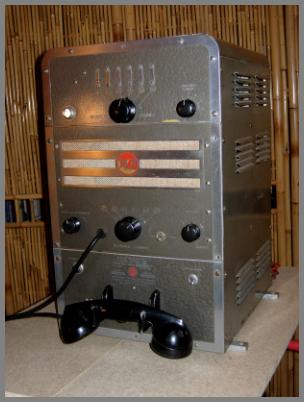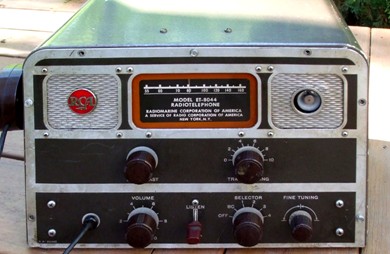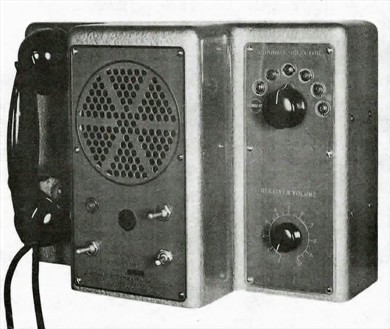
Radiomarine Corporation of America
Miniature of a RMCA sign
In 1919 the government assisted by GE engineered the formation of RCA to take over the American interests of the Marconi Company. At its inception GE owned at least 80% of the stock in the new company with the Marconi owning the remainder. The new RCA was initially a communications company, though broadcasting and the manufacturing of tubes and broadcast equipment soon over-shadowed the communications operations. According to George C. Oslin's book The Story of Telecommunications RCA's Radiomarine Corporation of America was formed in 1927.
Radio Broadcasting Magazine - May 1928 states: RADIOMARINE CORPORATION ORGANIZED - The ship-to-shore marine radio communications of the Radio Corporation of America were transferred to a new subsidiary, the Radiomarine Corporation with which was combined the Independent Wireless Company. Charles J. Pannill, former president of the Independent, is now vice-president and general manager of Radiomarine and J. P. Duffy, for years superintendent of the New York division of RCA marine, has been appointed superintendent of operations. Thanks to Robert Brown of MRHS for alerting me to this article about Radiomarine's ending, and thanks to World Radio History for preserving it.
Here, also recovcered from Woeld Radio History is a 1957 Article about RCA's marine services.
Click on this link to get a PDF of 19 RMCA advertisements .
RMCA was one of the prime providers of marine communications equipment and services for more than 40 years. It appears that on the lakes both RMCA and Lorain Electronics gear were the most popular with Lorain having the top position. On the rivers one ex-serviceman indicated that most of the AM gear that he serviced was RMCA brand. However, some of the early AM gear was Western Electric and Dennis Widdows, who did service work for Lorain from a Chicago base, stated that in addition to working on the "lakers" he went down the Illinois River servicing boat gear - probably Lorain.
The Great Lakes Cruise ships the SS South American, SS North American and the SS Alabama each had a RMCA ET-8031 system to support multichannel AM transmission and receiving. The system had 6 receivers, a motor-generator power supply, and a coil switching transmitter housed in a large cabinet. The system was operated from a control panel that could be located anywhere on the ship. Tom Drake who served as radio op on these vessels provided the 8031 control head and cabinet images that are shown below. They are from the manual for this system.
About 1944-5, RCA created an illustrated sales-pitch document profiling its capabilities for the Russian Peoples Commissariat of Electrical Industry. Someone with foresight saved this document and the significant pages are available, in PDF form, at: http://www.skywaves.ar88.net/Docs- the website of Al Klase - N3FRQ. My thanks to Al for permitting me to host this 19-page extract of RMCA data.
RCA IP-501A Receiver |
RMCA CRM-4615-3 Receiver |
|---|---|
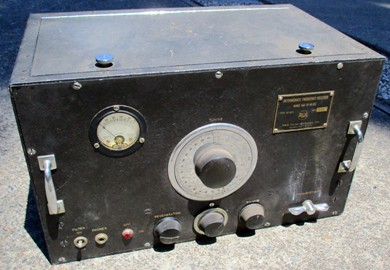 RMCA AR-6011 Receiver - 60 to 550KC |
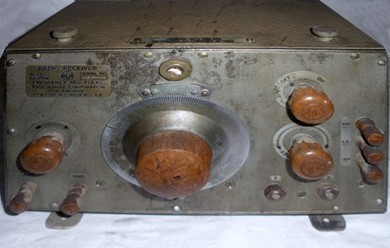 RMCA AR-8504 |
|---|---|
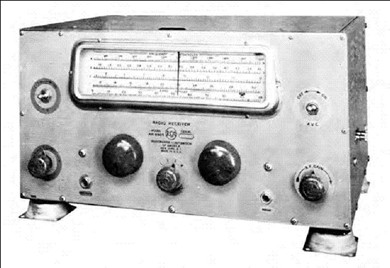 RMCA AR-8505 Receiver - Doran3 Platt, K3HVG supplied this AR-8506 photo. |
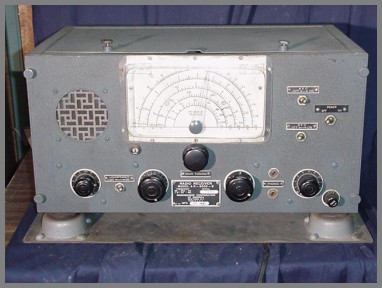 RMCA 10 tube Superhetrodyne RX Model 8506 - ca. 1940s. Covered from 85KHz to 550KHz and 1.9 to 25 MHz Larger Views: Front -- Back -- Top -- Bottom |
|---|---|
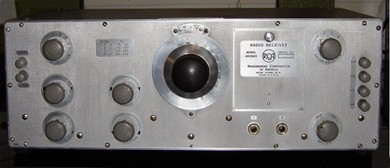 RMCA AR-8503 Receiver - 15 KHz to 600 KHz in 4 bands. A component of the 1940s vintage RAX-1 receiving equipment which also included a preselector and 110 VAC power supply. |
 RMCA CRM-R5A |
|---|---|
 The RMCA AR 8510 is a 5 tube regenerative Rx, covers 15-650 KHz in 4 bands and operates from 120 V DC. Click for Top View of 8510. |
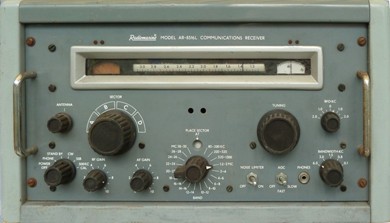 RMCA AR-8516L Receiver |
|---|---|
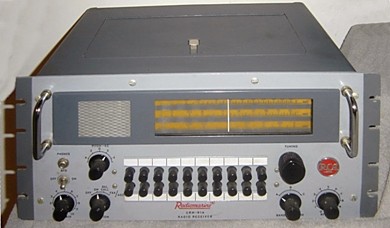 RMCA CRM-R1A Receiver |
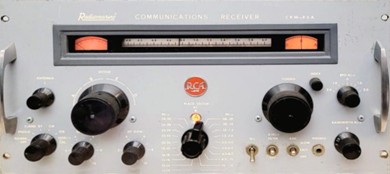 RMCA CRM-R6A Receiver |
|---|---|
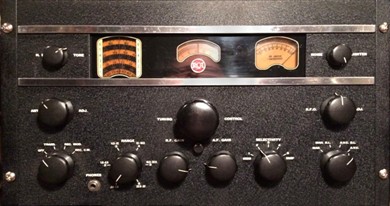 RCA AR-88 Receiver |
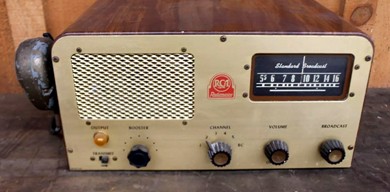 RMCA ET-8056 Transceiver |
|---|---|
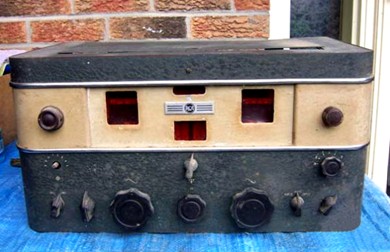 RMCA AR-77 Reciver |
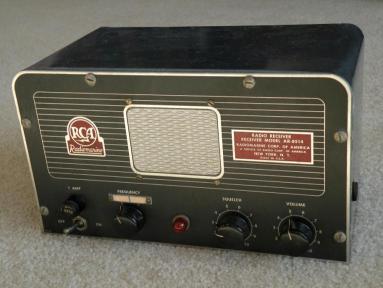 RMCA AR-8514 Reciver |
|---|---|
Bruce Spacer, WB8VCM provided the photo and information about his RMCA
AR-8514 receiver shown above. The introductory paragraph of the manual reads as follows:
Radiomarine model AR-8514 is a two channel, crystal
controlled, radio receiver designed primarily for shipboard service in
the 2000-3000 kc radiotelephone band. This receiver may be
used to maintain a radiotelephone watch on the safety-calling frequency
2182 kc, or on other frequencies in the band.
It appears that all radios were factory equipped with a 2182
kc crystal. The radio operates from 115 VDC. The
RM-208 Rectifier (separately available) was used to power the radio
from a 115 VAC source. The receiver is a seven tube, single
conversion super heterodyne with a 455 kc IF. The drawings
have 1952/1953 dates.
Here's an external link to another RMCA receiver, a superhet, the AR-8507, and a link to a photo of what appears to be a RMCA crystal controlled receiver. Model number unknown.
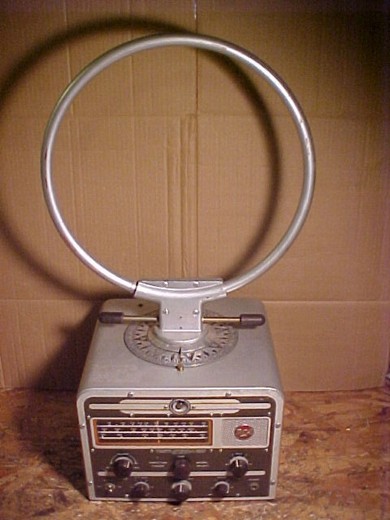 AR-8711 |
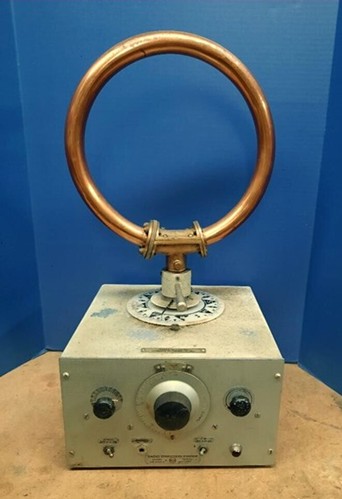 AR-8702 |
|---|---|
RMCA CRM-D1B Receiver |
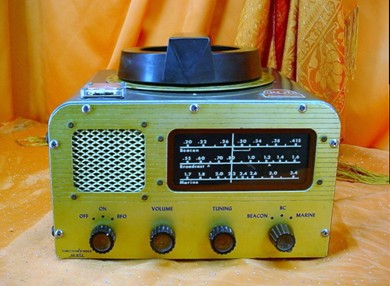 RMCA CRM-D2A Drrection-Finding Receiver |
|---|---|
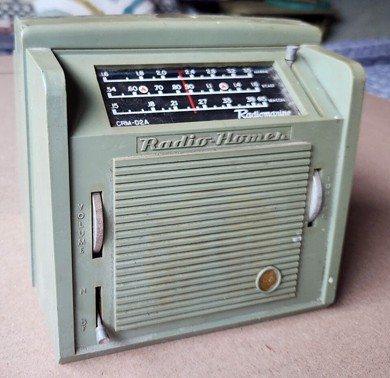 RMCA CRM-D2A Drrection-Finding Receiver |
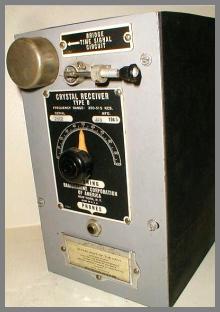 RMCA Backup/Emergency LF Xtal receiver - ca. 1944. They worked since Morse code was actually a modulated AM signal that was keyed on and off. |
|---|---|
The New England Wireless & Steam Museum has these early RMCA transmitters ET-8003 and ET-8004
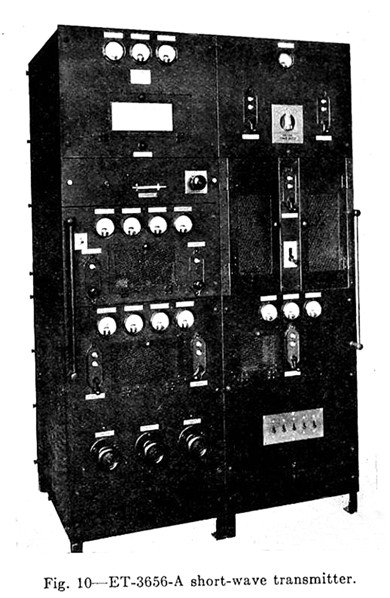 ET-3656 |
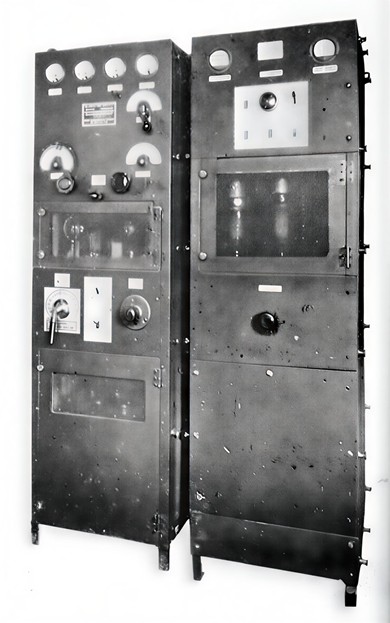 ET-3666 |
|---|---|
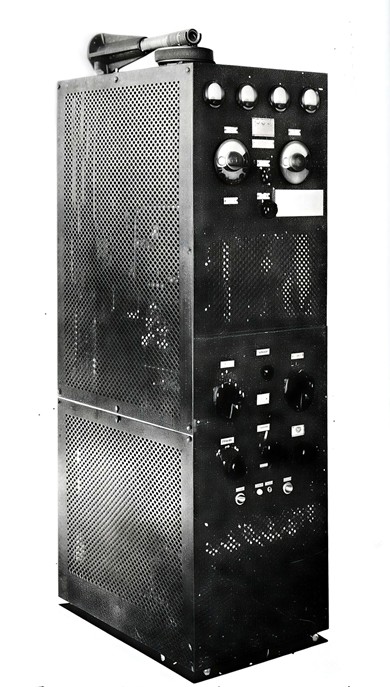 ET-3674 |
 ET-8011-A This 4 page 1939-40 Brochure promotes several RMCA Radiotelephone units.
LA8AK's RMCA AR 8503 VLF receiver page is
now only available via the Wayback Machine. |
|---|---|
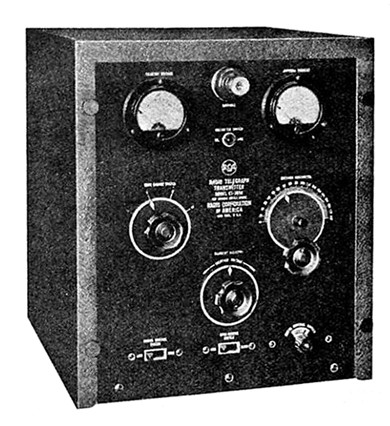 ET-3650 Emergency Transmitter |
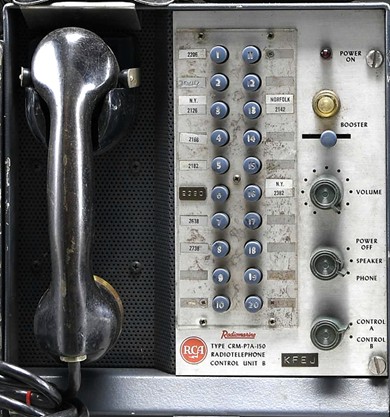 Control Head for CRM-P7A-150 MF/HF unit. |
|---|---|
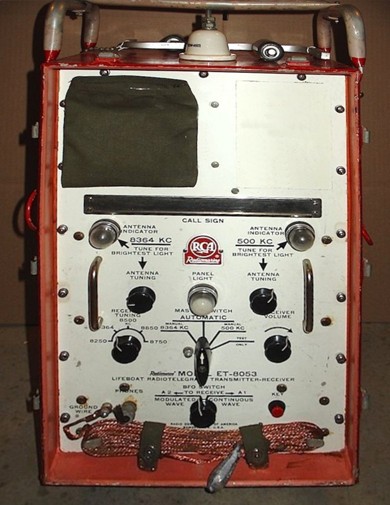 Lifeboat Emergency CW rig ET-8053 |
 ET-8050 Transceiver - Appears to be 8 channel |
|---|---|
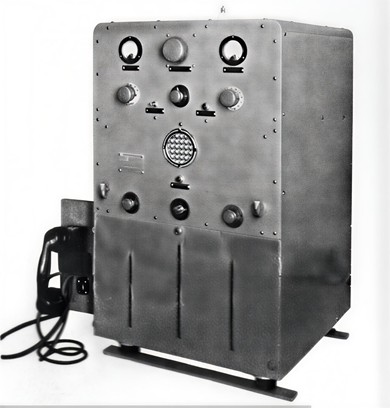 RMCA ET-8012-B |
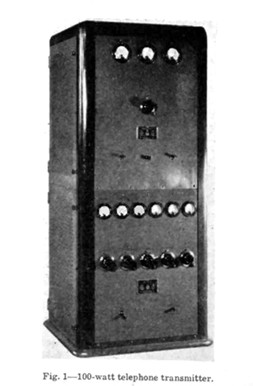 Model Unknown |
|---|---|
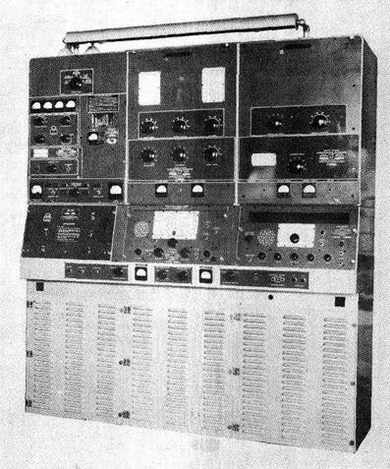 RMCA_6U_S Shipboard Console - 1940s? |
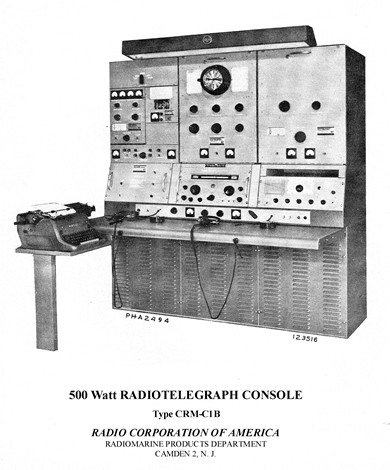 The CRM-C1B is a later model. CLICK ON THE PHOTO to see a detailed drawing identifying the console's components. |
|---|---|
Here's
an early version RCA AC powered SSB station for |
 CLICK ON THE PHOTO for a PDF with 3 more photos of this unit. |
|---|---|
The National Liberty Ship Memorial in San Francisco, CA has restored, and operates the Liberty Ship, SS Jeremiah O’Brien The ship's radio room has this nice RMCA 4U console RMCA
4U radio console. This is also the opeating position for (K6JOB) the ship's Amateur Radio club's station.
Doran
Platt, K3HVG supplied this instruction manual view of the 3U/4U
series of shipboard rigs. They were intended for
high-seas operation & were far more complex
than required for the rivers or lakes.
Jerry
Proc, VE3FAB has some pictures of a RMCA
3U radio console on his web site which also has other marine
radio gear images and information.
Here's a RMCA 4 bay shipboard console photo.
Ken Goodhue, WD6AOB, supplied the photo of the unit on the left below. According to ex-coastie, W8SU, these were used everywhere, light houses, surf boats, 40 foot motor boats for CG inter communications. A carbon mike was used for AM, and power was from a 6V. battery via a dynamotor in the power supply, or by normal 115V AC. The brass plate on the front panel has the following information on it: U.S. Coastguard Radio Transmitter Receiver Model TRP-141, Power output 5/10 Watts emission A3/A1, Frequency range 2000-9000KC. Serial No. 25. Cont. TCG-37524. Date 12/30/47. Order No. CC 8657-C. Manufactured by Radio Marine Corporation of America, New York, New York Bob Ballantine, W8SU, supplied this photo of a 1932 version of this type of unit. Nomenclature unknown.
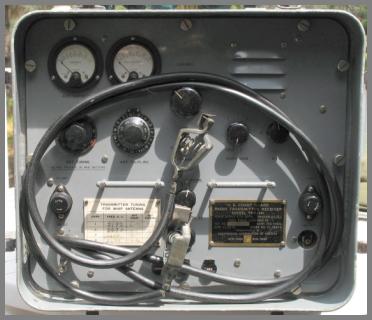 Ken Goodhue, WD6AOB, supplied this photo. According to ex-coastie, W8SU, these were used everywhere, light houses, surf boats, 40 foot motor boats for CG inter communications. A carbon mike was used for AM, and power was from a 6V. battery via a dynamotor in the power supply, or by normal 115V AC. The brass plate on the front panel has the following information on it: U.S. Coastguard Radio Transmitter Receiver Model TRP-141, Power output 5/10 Watts emission A3/A1, Frequency range 2000-9000KC. Serial No. 25. Cont. TCG-37524. Date 12/30/47. Order No. CC 8657-C. Manufactured by Radio Marine Corporation of America, New York, New York Bob Ballantine, W8SU, supplied this photo of a 1932 version of this type of unit. Nomenclature unknown. |
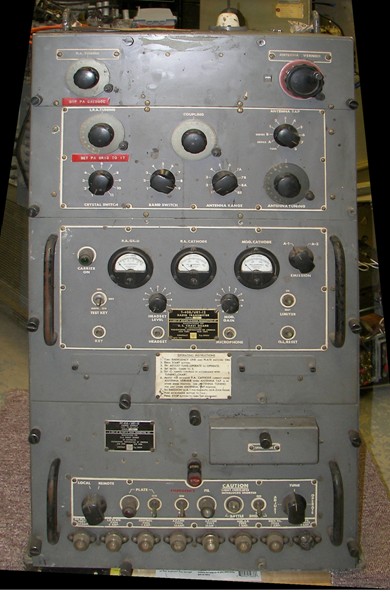 AN-URT-12 aka T-408/URT-12 Transmitter - Manufactuter in November 1955 for the US Coast Guard. Covers 2-30 MC, 75W carrier, AM/CW, 115 VAC power. Lifted from bunkerofdoom.com. |
|---|---|
 Above is a RCMA Model 8059 1950s vintage 6 channel AM unit which included a BC band receiver.
|
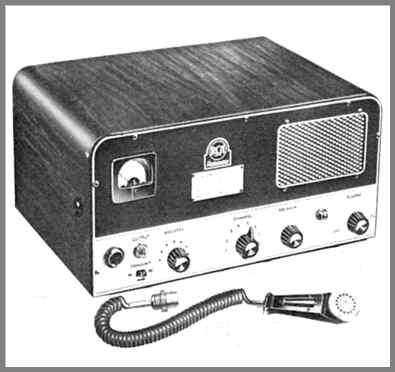 |
|---|---|
RMCA Cruisephone35 |
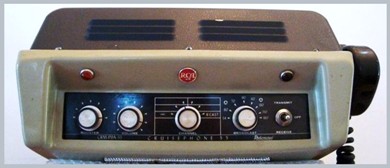 RMCA Cruisephone55 |
|---|---|
Patrick Jankowiak, KD5OEI has 21 detailed images of a RMCA Xmtr. manufactured for the Coast Guard in 1955 on his very interesting web site.
Here's a 1952 article with four photos of RMCA's equipment offerings at that years National Motor Boat Show. Thanks to Charles Eckard for this.
Thanks to Bartley Cardon, KD1KG here's a nice image of the RMCA radio operator's console on the SS John W. Brown Liberty Ship This gear was intended for high seas ships and is more elaborate than was used on the Great Lakes.

